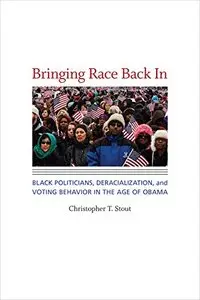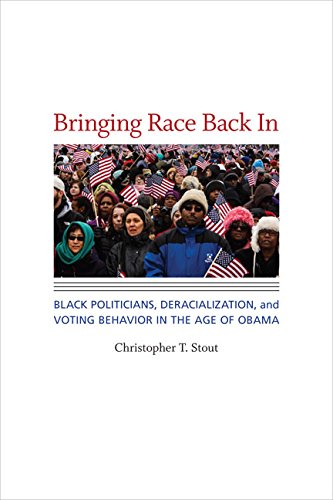Bringing Race Back In: Black Politicians, Deracialization, and Voting Behavior in the Age of Obama (Race, Ethnicity, and Politics) by Christopher T. Stout
English | Mar 13, 2015 | ISBN: 0813936683 | 184 Pages | EPUB/PDF (Converted) | 5.5 MB
English | Mar 13, 2015 | ISBN: 0813936683 | 184 Pages | EPUB/PDF (Converted) | 5.5 MB
Bringing Race Back In empirically investigates whether "post-racial" campaign strategies, which are becoming increasingly common, improve black candidates’ ability to mobilize and attract voters of all races and ethnicities. In contrast to existing studies, this analysis demonstrates that black candidates who make positive racial appeals (for example, racial appeals that indicate that the candidate will either advance black policy interests or highlight the candidate’s connection to the black community without attacking outside political players) not only perform better among blacks; they also improve their standing among Latino voters. Moreover, these appeals do not diminish white voter support. This finding counters conventional wisdom, which suggests that black candidates can succeed in majority white settings only if they distance themselves from the black electorate.
Following President Barack Obama’s 2008 success, both scholars and the popular media began examining how black candidates address race and racial issues in their campaigns, and scholars and journalists are now exploring whether black voters rally around black candidates who fail to discuss racial issues or who distance themselves from the black community. Bringing Race Back In addresses these issues by using a wide variety of data sources and a number of sophisticated statistical techniques. The study utilizes content analysis of over two thousand newspaper articles on over thirty presidential, U.S. Senate, and gubernatorial elections with African American candidates, in combination with quantitative analysis of state exit polls and U.S. Census voter surveys. In addition to its significant contribution to the scholarship on American politics, African American studies, campaigns and elections, and public opinion, the book also provides valuable insight for political practitioners who want to better understand how deracialized campaigns influence the electability of black candidates in the age of Obama.



